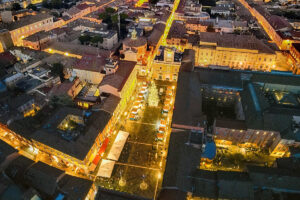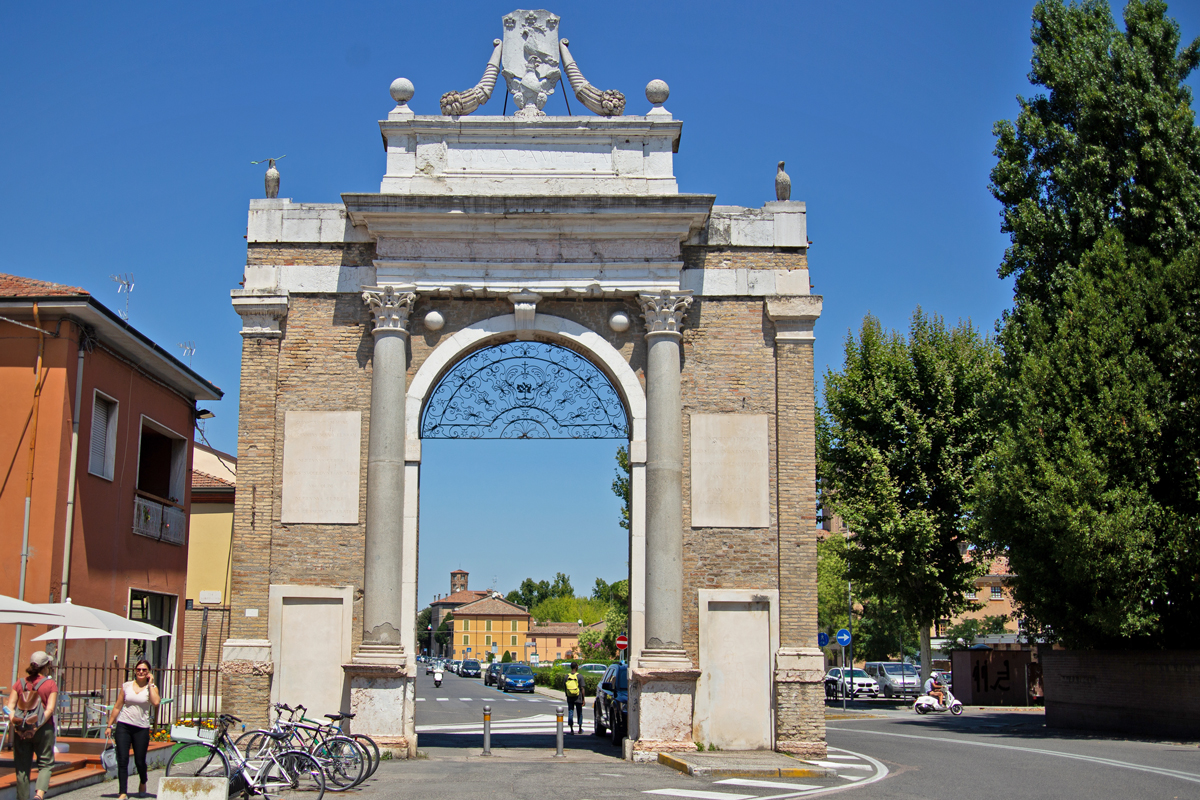PORTA NUOVA is considered one of Ravenna’s most beautiful access gates.
It is located to the south of the city, at the end of Via di Roma and at the beginning of the road leading to Rimini, the current Via Cesarea.
It was built in 1580, just a few metres from the already-existing Porta di San Lorenzo (whose remains are still visible in the entrance of an apartment building), on the occasion of the inauguration of a new wooden bridge over the Ronco river, which ran parallel to the city walls.
In honour of the then reigning Pope Gregory XIII, the gate was named “Gregoriana”, but for all the people of Ravenna it has simply remained Porta Nuova.
In 1653 – on the occasion of an important operation of construction of a new canal connecting the city to the sea beside the city wall – the gate was restored by order of cardinal Giovanni Stefano Donghi.
The canal – called Panfilio in honour of the then reigning Pope Innocent X Pamphili – gave the access gate a new name (Porta Panfilia). On that occasion, the gate was raised with an attic made of Istrian stone.
After the Unification of Italy, it was also called Porta Garibaldi, due to the name of the street crossing it. But even if the gate was renamed many times, the most popular name remained the unofficial one, Porta Nuova.
Between 1883 and 1929, this gate was crossed by the Forlì-Ravenna tramway, which continued towards Forlì along Via Ravegnana (see focus).
On December 4th 1944, this gate was the entrance to Ravenna for the first allied troops, and some days after, on the occasion of the official ceremony, also for the Canadian marching band of the Irish Regiment of Toronto playing bagpipes.
The gate is decorated with precious marbles, and the fornix is framed by two columns of grey granite with Corinthian capitals supporting a marble trabeation.
On top of the attic, flanked by two cornucopias, there is the coat of arms of Pope Innocent X, with a dove with an olive branch in its beak, symbol of peace. On the dove, three lilies crossed by beams.
In 1997, on the occasion of the 53th anniversary of the Liberation of Italy, a marble memorial slab was affixed on the interior of the gate, while two small commemorative plaques have been added to the internal facade, in honour of two patriots: Francesco Segurini and Mario Montanari, who died in 1921 and 1944 respectively.







